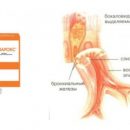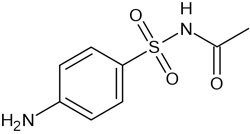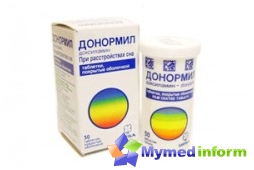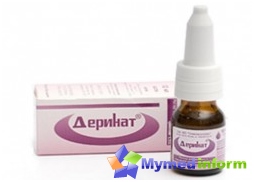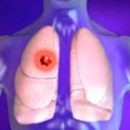General information about the drug
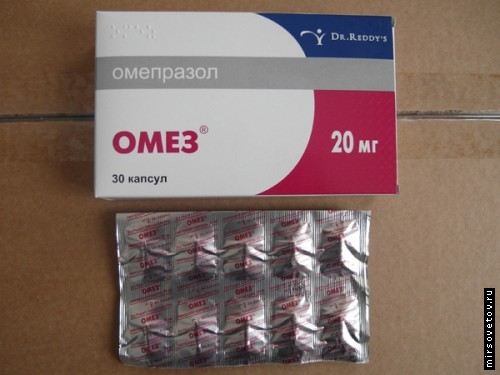
The eighties of the last century in gastroenterology were marked by two very important and significant events, in the future changed the views of doctors on the occurrence and development of ulcerative processes in the digestive tract, made changes in the principles of their treatment. First, Australian scientists Warren J. and Marshall B. In 1983, helicobacter Pilori infection was opened (in Latin - Helicobacter Pylori), which plays one of the dominant roles in the development of ulcerative pathology. Secondly, the Swedish scientist managed to create an omeprazole, which was assigned to the group of proton pump inhibitors. Thus, omeprazole became the first representative in the class of antisecretory agents, which are derivatives of benzimidazole. The main of the properties of omeprazole is the inhibition of acid-forming functions of the stomach, in which one of the intracellular enzymes is oppressed, often referred to as the proton pump (or intracellular pump). This is how the drug suppresses the products (production) of hydrochloric acid. Numerous tests have also shown that omeprazole helps to suppress the vital activity of Helicobacter Pilori.
In 1990, Omeprazole became known in Russia. First, the Swedish company registered it under the trade name «Losek». And in our country, they were also quickly confirmed by anti-sizes (anti-ortersogenic) properties of this medication. However, the cost of the drug «Losek» was very high for Russian patients. And great popularity in our country soon got the drug called «Omeless», manufactured by Indian manufacturers. This is synonym «Slosk», The actual substance is the same - omeprazole. For many years of use of ohmosis in gastroenterology confirmed that the medicine is very effective in complex therapy peptic disease. Healing of the ulcer, the disappearance of pain goes much faster than when the previously used histamine receptor blockers used, for example, ranitidine.
So, produced omise in gelatin capsules, which dissolve in the intestine. The active substance of each capsule is omeprazole. Its dosage can be 10, 20 and 40 mg. These are small white or slightly yellowish granules, placed in capsules.
If the dose is in a 10 mg capsule, then the housing of the yellow color, the cover of the light purple, there is a marking "Omez 10", made in black.
Auxiliary substances are used: mannitol, crosspovidon, hypimon, fieldsamer (407), Meglumin, magnesium stearate, triethyl acetate, dyes.
If the dose is in a 20 mg capsule, then the case is colorless, pink cover, there is an inscription "Omez".
Auxiliary substances are slightly different: lactose, mannitol, hypimosellos, sucrose, sodium lauryl sulfate, sodium hydrophosphate, copolymer of methacrylic acid, macrogol 6000, sodium hydroxide, talc peeled, titanium dioxide, gelatin, dyes.
If the dose is in a 40 mg capsule, then the body is light-purple, a yellow cap, there is a marking made in black, "omez 40".
Auxiliary components Here are the following: Crosspovidon, Mannitol, Poloxamer (407), Meglumin, Hypromellos, Magnesium Stearat, Triethyl acetate, Dyes.
If emergency therapy is required, for example, with complication of ulcers with bleeding, a solution for administration to Vienna is used, another dosage form is available - vials with powder for infusion powder.
pharmachologic effect
We have already mentioned that omeza blocks the final stage of production in the stomach of hydrochloric acid. At the same time, the drug is activated precisely in an acidic environment existing in the secretory tubules of special cells of the stomach. If a person takes 20 mg of ohnes, then for the first hour antisecretory activity is manifested. Maximum action is found in 2 hours. And the necessary effect continues about 24 hours.
When Omeless is prescribed?

The medicine cannot be applied at:
- increased sensitivity to components included in the composition;
- Pregnancy and lactation.
Omes in childhood is not discharged, caution should be observed in patients with renal or liver failure in history.
Mode of application

The drug must be taken inside for half an hour before meals (or immediately before the meal itself). It is advisable to do it before breakfast. Do not ride the contents of the capsule, just swallow it and drink water.
If the ulcer aggravated, the patient is usually prescribed at a dose of 20 mg (or 40 mg), the treatment lasts on average two or three weeks. Sometimes the doctor can set a rate to 8 weeks.
With pronounced Zolinger-Ellison syndrome, the gastroenterologist individually selects a dose, it all depends on the level of gastric secretion (most often it is 60 mg, but it happens above).
To prevent the effects of the NSAID reception, with reflux-esophagitis, the average dose is 20 mg daily for 2 weeks, sometimes the doctor extends the course to two months.
To prevent Mendelssoh's Syndrome, the patient gives 40 mg of the drug so that he drank it an hour before the operation.
For the prevention of exacerbations of ulcers is enough 10 or 20 mg of the drug per day.
To combat Helicobacter, pylori use different treatment schemes, combining several antibacterial effects and omens, which usually take a dose of 20 mg. Such therapy lasts for one or two weeks.
If the patient of the elderly, then the dose is not necessary to adjust. If you take medicines for the treatment of other diseases (for example, ketoconazole, diazepam, phenyuls, ferroplex, Warfarin), please inform your doctor.
Before appointing Overteese, the doctor must eliminate the presence of tumors in the stomach, otherwise the treatment may disguise the symptoms that in some cases it introduces oncologists to delusion and leads to a postponement of the formulation of a serious diagnosis requiring the adoption of rapid measures to treat the disease.
What you need to know about side effects?

One of the positive qualities of ohmosis is that when it is used, the low frequency of unwanted effects is stated. Sometimes appears diarrhea (much less often - constipation), violation of taste sensations, nausea, abdominal pain. If a person had liver diseases, then its function can worse. Very rarely manifest:
- muscle weakness;
- dizziness, depression;
- Skin rash, Outlet Quincke;
- strengthening;
- peripheral edema;
- The formation of a cyst in the stomach (with long-term reception).
Thanks to its therapeutic properties and a low price (if compared with other drugs), an omez in recent decades has become often appointed by gastroenterologists. If you have questions about the reception of this medication, then definitely contact your doctor.

